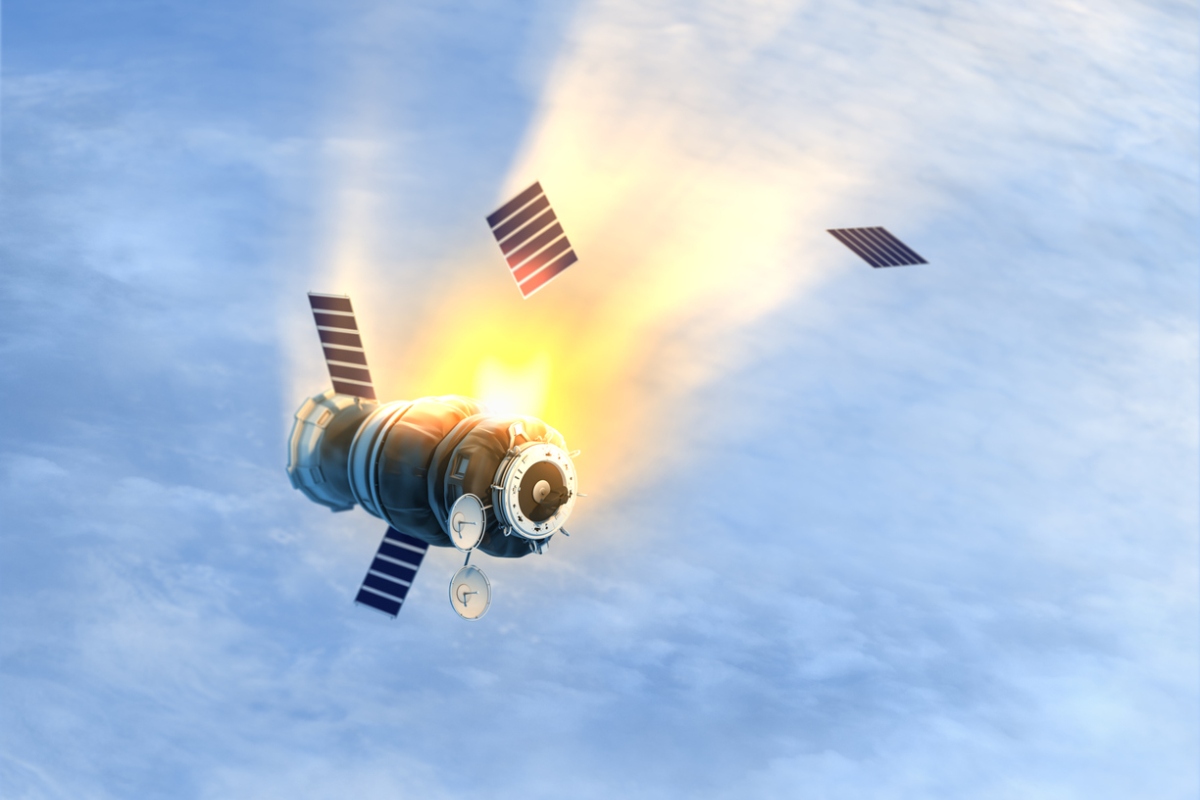The display of technological prowess through the test accentuates the military dimension and brings into play an overwhelming assurance of what the Ministry of External Affairs describes as ‘credible deterrence’ against attacks on India’s increasing of space assets. Although only three other countries, the US, Russia and China, have previously demonstrated this capability, it is possible to suggest that countries with long-range missiles could do the same with equal effectiveness. But India, surely, is staking a claim as a space weapons power.
India has entered an elite space club with the accomplishment of ‘Mission Shakti’ when the Defence Research and Development Organisation (DRDO) blew up an Indian satellite in a Low Earth Orbit into smithereens. The country had already achieved the capability of shooting out moving targets in space way back 2011 and has for years been testing long-range missiles, although public attention on the space programme has been largely focused on its civilian and scientific domain. The military dimension, though always latent, had not seen a verifiable demonstration as in the case of Mission Shakti, the Anti- Satellite (ASAT) missile test.
Advertisement
The display of technological prowess through the test accentuates the military dimension and brings into play an overwhelming assurance of what the Ministry of External Affairs describes as ‘credible deterrence’ against attacks on India’s increasing of space assets. Although only three other countries, the US, Russia and China, have previously demonstrated this capability, it is possible to suggest that countries with long range missiles could do the same with equal effectiveness. But India, surely, is staking a claim as a space weapons power.
While the country celebrates the test as a scientific achievement, it must also reflect on the possibility that this might spur its none-too-friendly neighbour Pakistan into a competitive frenzy and make its prowess uncomfortable. Also, in the absence of a credible threat to India’s space assets from China or any other country with Anti-Satellite missile capabilities, it is a moot point whether the ‘deterrence’ sought to be achieved by this test will lead to a more stable strategic security environment. It is certainly a great achievement as a deterrent. There are other questions, too. Will the test spur space weaponisation?
Prime Minister Narendra Modi, while announcing the success of the test, was clear on the point that India wanted to maintain peace rather than indulge in warmongering. And, by targeting a low-orbit satellite, the missile test did the utmost possible to minimise space debris, which is an issue of international concern especially in the US. But, within India, the timing of the test ~ prior to the general elections ~ does raise concerns whether this was aimed at winning votes. The opposition parties have complained to the Election Commission that Mr Modi has violated the model code of conduct by announcing the success of Mission Shakti, but the Election Commission on 29 March gave a clean chit to the Prime Minister by asserting that his address to the nation on the successful testfiring of an anti-satellite missile did not violate the model code of conduct. The EC took the decision based on the report of a committee of officers, which found that the Prime Minister did not violate the provision of ‘party in power’ in the poll code. Despite clearance from the EC the opposition parties continue to harp that it is a flagrant violation of the model code.
The DRDO had been carrying out tests on anti-satellite missile-based systems to attack moving satellites since 2011. So far the United States, China and Russia were the only countries with the ability to shoot down space objects from ground or airborne sources.
The development of such systems has a long history, fuelled by the Cold War between the United States and the former Soviet Union. There are two different methods ~ those that can be launched from the ground and those vaulted from aircraft. In the Cold War/Space Race era, 1985 was the last time that the United States had used an antisatellite system to destroy its P- 781 satellite that had instruments on board to study solar radiation. Anti-satellite weapons became still more useful after China conducted an antisatellite missile test on January 11, 2007. The government officially confirmed this only on January 23 following reports in the US media. The target was a Chinese weather satellite ~ the FY-1C ~ that sailed at an altitude of 865 kilometres (537 miles). A year later, the United States launched ‘Operation Burnt Frost,’ the code name to intercept and destroy a nonfunctioning US National Reconnaissance Office (NRO) satellite named USA-193.
While ‘Mission Shakti’ may have targeted an object in outer space, India does have the ability to intercept incoming missiles. In 2011, a modified Prithvi missile mimicked the trajectory of a ballistic missile with a 600-km range. Radars at different locations swung into action, tracking the “enemy” missile, constructing its trajectory and passing on the information in real time to the Mission Control Centre (MCC) to launch the interceptor, an Advanced Air Defence (AAD) missile. It had a directional warhead to go close to the adversarial missile before exploding to inflict damage on it.
Prime Minister Narendra Modi on 27 March announced the success of ‘Mission Shakti,’ an operation that demonstrated India’s anti-satellite missile capability by shooting down a live satellite. He described it as a “rare achievement” that puts the country in an exclusive club of space super powers. The satellite was about 300 km away from earth but no details were shared regarding its ownership and what the satellite was used for and what were the reasons for choosing that particular satellite for the test. India’s ASAT development has a long history with Dr V.K. Saraswat, Director-General of the Defence Research and Development Organisation, stating in 2012 that the country had “all the building blocks necessary” to integrate an anti-satellite weapon to neutralise hostile satellites in low earth and polar orbits. However there was never any formal announcement of such a mission. The Indian satellite that was shot down was a Low-Earth Orbit (LEO) satellite. These are satellites roughly at an altitude of 2,000 kilometres from the earth and that is the region where most of the satellites are concentrated. A database from the Union of Concerned Scientists, a non-government organisation based in the United States, states that there are at least five Indian satellites in LEO ~ India PiSat, Resources at 2, Radar Imaging Satellites 1 and 2 and SRMsat.
(The writer is former Senior Professor, International Trade. He may be reached at vasu022@gmail.com)











